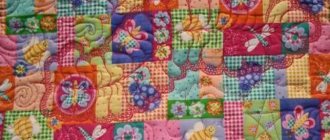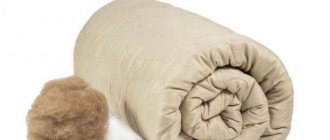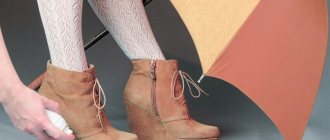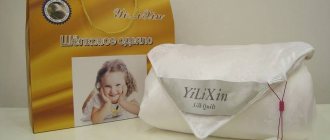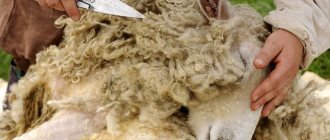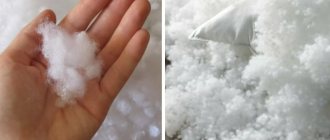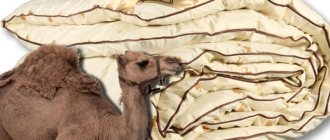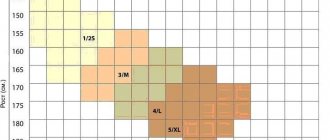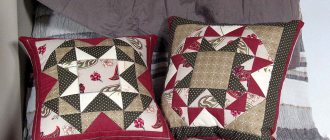What should a baby blanket be like?
In Soviet times, the most popular type was children's flannelette blankets, but now the range of blankets is very diverse, you can find a plaid blanket or a teenage bedspread, as well as other types of products designed to cover children while sleeping, and the choice is becoming more and more difficult. In order not to make a mistake when choosing, you should consider the following criteria:
- environmental temperature conditions are taken into account. There are winter and summer models. But manufacturers do not stand still and have come up with an option where the blanket can be used at any time of the year. In this case, the two covers are attached to each other with a zipper or buttons, and then by removing one of the covers, you get a less warm option that will make sleep in warm weather comfortable and will not overheat the child during sleep, and vice versa, the two covers will reliably protect the baby from the cold;
- The weight and size of the product are important; if you cover your child with a product that is too heavy, you can expect that his sleep will not be restful. Lightweight products are made from synthetic materials and down. A baby's wool blanket is heavier than a cotton blanket. The size depends on the size of the bed;
- the product should not cause allergies, because children are often susceptible to allergic reactions. Therefore, the naturalness of the material, although more environmentally friendly, can play a negative role by causing allergies; to avoid this, you need to know whether the material can become an allergen for the child;
- in their sleep, children often fidget and spin in all directions so that once the child gets under the blanket with his head, he can breathe calmly; it must allow air to pass through well. Natural fillers “breathe” better;
- ease of cleaning. Children under one year of age are prone to frequent regurgitation, which can also occur during sleep, so products often have to be washed. In this case, it will be important that washing is easy and convenient;
- quality stitching of the product. The child's active movements during sleep can deform its shape if the filler is poorly attached to the cover. The standard is the use of quilted stitching; it can be made in the form of squares. Thus, they contain parts of the filler and cannot move into other parts. Or stitching with various patterns is possible, which also prevents the appearance of lumps on the surface of the product.
Important! Usually two types of blankets are purchased, one is used in winter, the other in summer.
How to choose a blanket for a child: what to look for when choosing a blanket
It is important to know which blanket to choose for a child if the baby is not a fan of opening up. Everything related to a child's sleeping place is the key to health, sound sleep, normal development... Blankets can be divided into several classifications
Summer and winter blankets, natural and artificial, with natural or synthetic filling.
Blankets can be divided into several classifications. Summer and winter blankets, natural and artificial, with natural or synthetic filling.
What criteria should be taken into account when choosing a baby blanket?
And in fact, one of the main ones is convenience.
1. Season.
First, you need to decide at what time the blanket will be used.
- The winter type of blankets is warmer and has a dense filler. In summer, it is usually hot and uncomfortable under them.
- The summer version of blankets is made in a lightweight style. The filling is selected individually because different fillings will retain heat in their own way.
- Double-sided blankets are quilted on both sides with different materials. This type of product can be used all year round, but in regions where the climate is temperate.
- Four Seasons is an interesting type of push-button blanket. In the warm season, the additional part is unfastened; in cold weather, both are used.
2. Weight.
A very important criterion, especially for children.
A heavy blanket cannot be called comfortable. 3. The naturalness of the fibers
is also important, and no less than the previous points. Natural materials are allergy triggers due to the stiffness of the fibers, while synthetics and faux fur have a pleasant smoothness. Wool particles irritate the skin and mucous membranes. It’s a paradox, but it is artificial substitutes that are less allergenic.
- Natural fillers: sheep, camel wool, bamboo and silk;
- Artificial fillers: holofiber, Vitasan, acrylic.
4. Breathability.
During sleep, a person sweats, and the moisture is absorbed by the sheet and blanket. And if the second does not allow air and moisture to pass through, then an unpleasant microclimate with increased temperature and humidity is formed under the blanket.
5. Character of fibers.
Air permeability and vapor permeability are properties that are inherent in natural fibers. To achieve the same quality, artificial fibers need to take additional measures.
6. Distribution.
With fillers, incidents are always possible - lumps, stray fluff. The problem can be solved using a certain sewing method.
7. Price.
It all depends on financial capabilities. Advice: one blanket, but of good quality, is better than three or four poor quality ones.
Winter baby blankets
The composition of the filler for winter models can consist of natural or synthetic materials.
Thus, among the natural options parents can choose from, camel or sheep wool, various down and bamboo are suitable. If there is a possibility of allergic reactions in a child, you should give preference to artificial fillers.
Pooh
A baby duvet can be made from white goose or loon down; they provide good warmth. If the room temperature is low, then this option will be a good way to provide warmth to the baby. The blanket is light, absorbs moisture well and allows air to pass through.
Important! Suitable as a blanket for a stroller, a walk in winter will be comfortable, and the child will not freeze.
But these products are also not without their drawbacks; caring for them is possible only in the form of dry washing, the cost is high, and field mites may appear in the filler.
Sheep's wool
Sheep wool has a lot of positive qualities, because it has useful properties for promoting health: it has a beneficial effect in the presence of muscle pain, can help strengthen the immune system, and stimulates good metabolism.
Note! But we are only talking about the use of filler in pillows or blankets consisting of 100% wool.
This product also has a calming effect. In summer weather it will not be hot under it, but in cold weather it will be warm.
However, it is heavy in weight and this material is considered a strong allergen, so it is not very suitable as a blanket for a newborn in a crib.
Camel's wool
Blankets are also made from camel wool, which is more expensive. But it also has good properties:
- it has been scientifically proven that this wool contains a large percentage of lanolin, which has good healing properties and has a beneficial effect on the body of children;
- the material is “breathable” and is moisture permeable;
- just like sheep's it warms in cold weather, cools in hot weather;
- It is easy to care for; usually it is enough to just air out baby blankets for newborns a couple of times a year.
To save money, if you know how to knit, you can knit a wool blanket using large knitting needles with your own hands. The complexity is minimal, because the blanket does not have to be made with an ornate pattern. You can also find crochet patterns on the Internet.
Bamboo
Bamboo products are becoming increasingly popular. Bamboo fibers can be obtained mechanically and chemically, but the method does not particularly affect the properties. The following product characteristics can be noted:
- has an antibacterial effect;
- bedding will not cause allergies in the sleeper;
- characterized by softness (like plush) and lightness;
- care is easy;
- Suitable for sleeping in hot and cold weather.
Holofiber
This material is one of the best options made from synthetic materials and consists of polyester fibers. Products made from it are light and allow air to pass through well, retaining heat; one can also note its low cost and hypoallergenicity.
Advantages and disadvantages of fillers
Types of blankets are distinguished based on the filling used. The following requirements are imposed on the padding: safety, absence of toxic substances, breathability, removal of moisture from the sleeping person. The best filling for a blanket meets the listed parameters.
Wool
Experts consider blankets with natural fillings to be the best. Bedding manufacturers use sheep, camel, llama, and alpaca wool.
Models made from sheep wool are environmentally friendly, comfortable, and retain heat well. Especially soft merino wool blankets.
Camel wool is warm, light, freely allows air to pass through, absorbs moisture, and ventilates quickly. The material contains lanolin, which is beneficial for the muscular system and joint tissue.
Llama wool is light in weight, repels water well, retains heat and will last a long time. Useful for people suffering from diseases of the joints and spine. Improves blood circulation, allows the skin to breathe freely.
Alpaca wool is weightless, durable, warm, and has healing properties. The level of heat and humidity varies depending on the characteristics of each person.
Pros:
- environmental cleanliness;
- medicinal properties;
- rapid removal of fluid;
- lightness, effective heat retention.
Minuses:
- cannot be washed, dry clean only;
- Contraindicated for allergy sufferers.
Cotton, cotton wool
Until recently, traditional cotton wool served as filling. The use of new technologies helps to choose a blanket made of cotton fiber, which is more elastic and wear-resistant.
Pros:
- harmlessness to humans;
- low price;
- good thermoregulation.
Minuses:
- heavy weight;
- poor evaporation of moisture;
- short service life.
Silk
This filler is of high quality. It is made from pre-processed silkworm cocoons. The stuffing does not harbor germs or parasites.
Pros:
- hypoallergenic;
- good moisture exchange;
- hygiene.
Minuses:
- applicable for off-season and summer time;
- high price.
Bamboo fiber
The raw material for filling the blanket is cellulose extracted from the bamboo stem. The quality of the models is not inferior to silk, does not cause allergies, and allows air to pass freely.
Pros:
- environmental cleanliness;
- hypoallergenic;
- a light weight;
- easy care.
Minuses:
- holds heat poorly;
- only for summer;
- weakly absorbs moisture;
- service life – 2 years.
Eucalyptus fiber, tencel, lyocell
A new blanket filler of plant origin. It is created from thin shaggy cellulose extracted from the stems of eucalyptus trees.
Pros:
- hypoallergenic;
- high heat capacity;
- ease of care;
- long service life.
Minuses:
- high price;
- risk of purchasing a counterfeit.
Polyester fiber
Artificial padding is no longer inferior to natural materials. Most people associate synthetics with something low-quality and short-lived. Now you can choose a blanket made of holofiber, microfiber, silicone, or comforter. These models will be warm and will last for a long time.
Pros:
- does not release toxins, does not provoke allergies;
- does not roll down;
- retain heat well;
- light weight.
Minuses:
- accumulation of static electricity;
- poor moisture resistance.
Pooh
More often the stuffing is represented by duck or goose feathers, in rare cases - loon or swan down. A good blanket has a durable structure and is light in weight.
Pros:
- complete thermoregulation and thermal insulation;
- free air circulation;
- stable form;
- small weight;
- long service life.
Minuses:
- high price;
- special care and storage;
- low moisture exchange;
- not recommended for allergy sufferers.
Flax, hemp fiber
These fillers of plant origin have a low price, and in popularity they are not inferior to elite silk models.
Pros:
- hypoallergenic;
- hygiene;
- good moisture permeability, breathability;
- long service life;
- high heat capacity.
Minuses:
the price is much higher than for analogues made from eucalyptus and bamboo.
Thin blankets for the summer season
In the summer, the child needs protection from the sun's rays and in the evenings, which can be cool. For this weather, cotton and silk materials are used. They are “breathable”, quickly absorb moisture and are light and pleasant to the body.
Cotton
Technologies are improving, and now cotton products are made using modern techniques. Therefore, the children's cotton blanket that was produced earlier is strikingly different from its modern counterparts.
The process description includes the following steps:
- the fiber is cleaned;
- after which it is combed and parallelized, resulting in white, even threads.
Note! The most commonly purchased blankets made from these threads are flannelette blankets for newborns and terry blankets.
Silk
Silk is an excellent option for covering a child. The child's skin will not sweat under it, but he will also not freeze under the silk blanket. Another advantage is that it is hypoallergenic and easy to care for; it can be machine washed; silk dries quickly without changing its appearance.
Blanket sizes
The child is constantly growing, so blankets will be needed in different sizes. Periodically you will need to buy new products. By size, the following options can be distinguished:
- For babies, blankets are usually made in sizes 80x120; they fit well in the crib. To avoid the blanket being thrown off during sleep, it can be tucked under the mattress, then it is better to choose the size 110x140;
- for warm weather, bedspreads measuring 80x100 are suitable;
- products available for discharge have a variety of sizes, ranging from 90x90 to 100x160;
- for older children from 3 years old, purchase a 100x140 bedspread, which will last him until about 7 years old;
- the next stage of the child’s growth involves the use of a one-and-a-half blanket, which he can cover even in adolescence, usually the size is 150x200;
- Now the products are so diverse that you can find almost any size; if there is a need, you can find a blanket measuring 100 by 100, or 100x118 and others.
So finding the right size will not be difficult, and parents themselves can determine which option will be convenient for them and their child.
Functionality and quality
Duvets are considered the most sought after and popular, the most comfortable and of the highest quality. Those who understand the luxury of bed linen do not buy a blanket in the supermarket that says “swan's down” on the packaging. Most likely this is a fake, because swans have relatively little fluff, which makes industrial production difficult. Expensive stores, more like museums, sell products from famous European brands made from different types of natural down, namely:
- goose, the most popular, from Swiss manufacturers - standard;
- duck, which is treated with a little disdain and is considered low-grade due to the structure of the fluff;
- eider - the warmest and most expensive, but heavier.
Connoisseurs do not buy swan down: it has long been prohibited by law and has been officially replaced by artificial one. The artificial down of a hypothetical swan is just as light and warm, but, unlike natural, it does not cause allergies and, with proper care, does not form into clumps. At the same time, it costs less, does not become damp and does not become a home for down mites. So if it is in a case made of natural fabric and sewn using the cassette method, from well-known manufacturers from Europe it is not much cheaper than a natural one.
How to choose a blanket for the season and the warmest:
Bamboo, camel, wadded, double, down single-and-a-half, cassette-stitched, in a cover made of natural fabric or a summer one made of synthetic padding, with Karostep, on a Euro bed - the choice is quite large, but once you set your priorities, it won’t be difficult. If you choose the right blanket, you will have a comfortable night's rest for a long time.
Features of blankets for newborns
The skin of a baby is delicate, and it should be covered with a high-quality product that will meet the following parameters:
- Heat is determined by temperature readings indoors or outdoors. It is important that the baby does not overheat and does not freeze. Therefore, for walks, a warmer option is purchased; in the house, you can use a less dense and warm blanket;
- the size should not be small or too large. Under a large blanket the baby will not be able to move;
- the product should not be heavy either, the weight can make breathing difficult;
- soft types are selected so that upon contact with the baby’s skin, he feels a pleasant sensation;
- of course, the material should not contribute to allergies;
- breathability, air access to the child’s skin is necessary;
- the product must absorb moisture and dry quickly;
- environmental friendliness;
- care should be easy, because frequent washing cannot be avoided; in order to be able to wash the product at any time, you need to learn in advance about the rules for caring for it. And choose the option that will be convenient.
For newborns, it is better to purchase products from trusted manufacturers, check for a certificate of conformity, so that later there will be no problems with the child’s health. In this case, it is better to overpay, because some consequences may not be corrected.
Note! There is no need to choose bright colors, because the presence of a large number of dyes is not desirable. In addition, bright colors and drawings will not put the baby in the mood for sleep. Also, pay attention that the product does not have large lint that a child could choke on if they put it in their mouth.
It is worth having two blankets at once, one will be needed for walks, the other at home; different materials of blankets can be used. Fleece ones are popular; sometimes in hot weather it is enough to cover the baby with a knitted sheet. A knitted blanket can become a demi-season blanket, but first you need to make sure that it will not cause allergies.
How to properly care for a baby blanket
The blanket is used often, to increase its service life, you need to properly care for it:
- it is worth ventilating it often, this is done about once a week;
- synthetic material should be washed once a month;
- woolen material should be washed by hand, in warm water, and only with detergents for woolen products;
- It is better to dry-clean silk material, but it can also be ventilated and shaken to maintain its shape and freshness;
- the type of material determines the rules for caring for it; manufacturers indicate basic care requirements on the label; you need to familiarize yourself with them and not neglect the recommendations.
The purchase of a blanket for a child should be carried out taking into account general recommendations so that it provides warmth and comfort during sleep. After all, sleep is an important process during which a child grows and gains strength to explore the world around him. It is worth paying attention to the choice of blanket; the variety of assortments makes it possible to choose the best option, but you can get confused; the information provided in the article should make the task easier.
